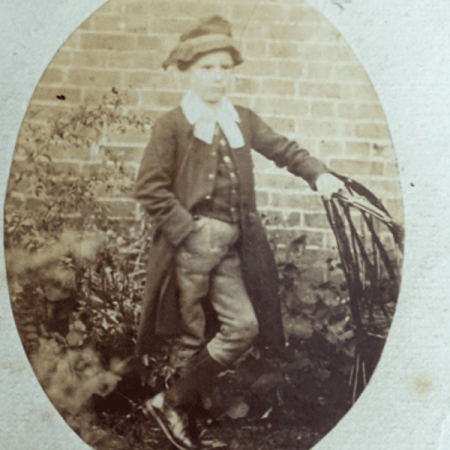A grant from Hampshire Archives Trust allowed Hampshire Archives to purchase at auction a small group of records of Nowes Charity, Romsey, including property deeds from 1685 in Middlebridge Street, Romsey. John Nowes of Lee set aside money in his will to fund schooling, clothing and apprenticeship for 40 poor boys, 20 to be taught in Romsey, 10 at Yeovil, 10 near Salisbury. These documents have now been catalogued and are referenced 87A19/1-13
In the early 18th century John Nowes of Lee, Romsey left his 200-acre farm at Lee to three trustees. They were to apply the yearly rent in schooling, clothing and apprenticing 40 poor boys, 20 to be taught in Romsey, 10 at Yeovil and 10 at Fisherton Anger near Salisbury. It is believed that the school at Romsey was initially in the Horsefair, but by 1841 finances permitted the purchase of land in Middlebridge Street and a new school was built. In 1862, Lord Palmerston bought the Lee Estate and the trustees invested the proceeds in an estate at Dibden Purlieu. In 1875 the school in Romsey closed and pupils were transferred to the National School.
In the 20th century, both boys and girls were assisted in various ways by the charity, with grants for clothing or scholarships for further education. The charity was wound up in 2011 and the remaining money distributed among Romsey schools.
DON’T TRY THIS AT HOME! A 19TH CENTURY REMEDY FOR GOUT
The collection includes some letters written in the 1830s by the Revd Thomas Tomkins, master of Yeovil School, to Mr Daman of Romsey, clerk to the charity. Mr Tomkins usually writes to send his yearly bill for the charity boys in his school, or to thank Mr Daman for a payment, but the letters also include correspondence of a social nature; in one letter Mr Tomkins sympathises with Mr Daman for suffering from gout, and sends him a recipe for medicine which he hopes will cure it, involving gin, sulphur and water to be drunk before bed every night for 3 night, then 3 nights without then back to the same treatment. In Mr Tomkins’s last letter, dated 14th June 1839, he writes that his son-in-law has taken over the school as he is confined to bed following a severe attack of paralysis.
Don’t try the recipe at home! sulphur is used in many pharmaceuticals today but much better to go to your GP. Medical information suggests drinking lots of water as a treatment (to dilute uric acid that causes the condition) but says it should clear up in 5 to 7 days, though may well recur. Is it co-incidental that Mr Tomkins treatment lasts 6 days….

